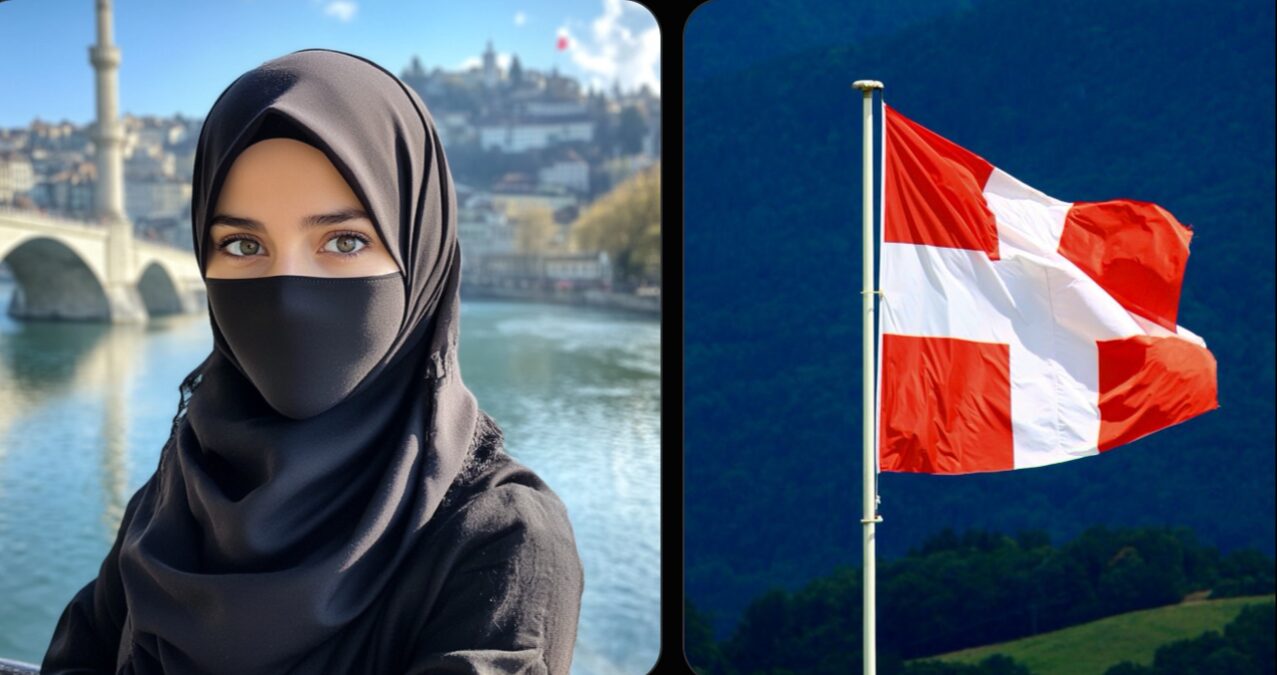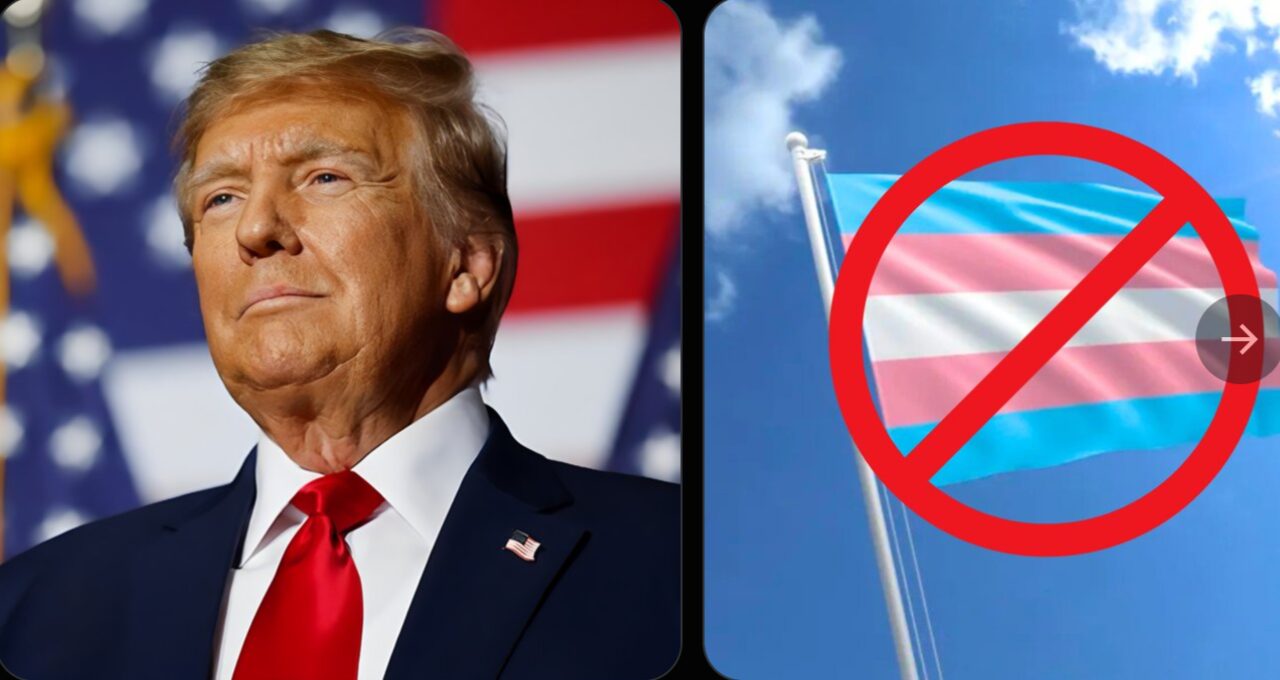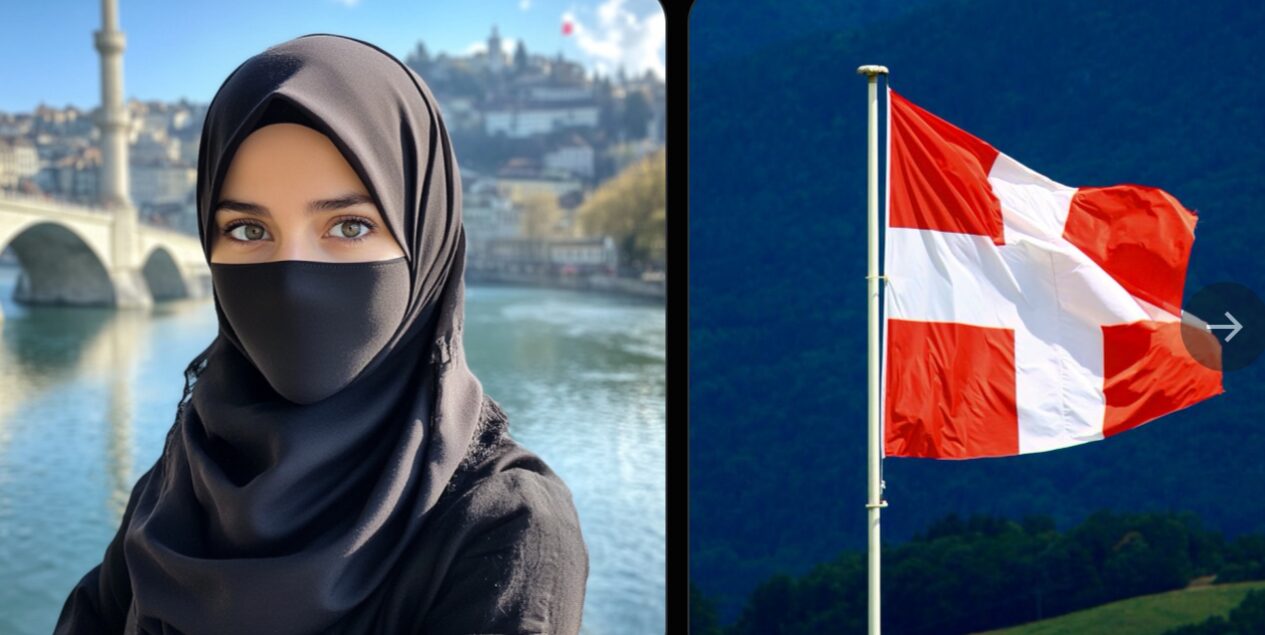Switzerland’s Face-Covering Ban Officially Goes Into Effect
Switzerland has officially implemented its long-debated face-covering ban, marking a significant shift in the country’s approach to public order, security, and cultural integration. The controversial law, which prohibits the wearing of full face coverings such as the niqab or burqa in public spaces, has sparked debate across Switzerland and beyond, drawing attention to issues of religious freedom, gender equality, and cultural identity.
The Face-Covering Ban Explained
The new law, which came into effect in January 2025, bans any face-covering garments that obscure the face, including full veils like the niqab and burqa, in public spaces such as streets, parks, shops, and public transportation. The ban also extends to face coverings worn for reasons beyond religious expression, including masks worn for disguise or protest.
This move follows a nationwide referendum held in 2021, where the majority of Swiss voters supported the ban, making it part of the Swiss legal framework. While the law does not prohibit the wearing of headscarves, it specifically targets garments that cover the face, sparking controversy among those who see it as an infringement on personal freedoms and religious practices.
Why Did Switzerland Implement the Ban?
The Swiss government and proponents of the ban argue that the face-covering prohibition is essential for maintaining social cohesion, public safety, and gender equality. Advocates claim that full-face coverings hinder communication and integration into Swiss society, making it difficult for people to engage in public life and identify individuals for security purposes.
Additionally, the Swiss government has stated that the law aims to protect women, with supporters claiming that certain types of face-coverings, such as the burqa and niqab, are symbols of the subjugation of women and not necessarily a reflection of personal choice. By banning these garments, they hope to promote gender equality and encourage women to participate more fully in public life, particularly in education and the workforce.
The law also comes amid growing concerns in Europe about radicalism and terrorism. Some supporters argue that face coverings, particularly those worn by a minority of Muslim women, could potentially be used to conceal one’s identity and evade security checks, especially in light of security threats.
The Controversy and Opposition
While the Swiss government and its supporters argue that the law promotes safety and equality, many opponents see the face-covering ban as discriminatory and an infringement on religious freedom. Critics argue that the ban disproportionately affects Muslim women, who may wear the niqab or burqa as an expression of their faith. Many believe that such laws perpetuate negative stereotypes about Islam and marginalized communities.
Human rights groups, religious organizations, and some political parties have raised concerns about the impact the law will have on personal freedoms, particularly the right to express one’s religion in public. For many, the ban represents a broader trend of rising Islamophobia and intolerance toward religious minorities across Europe.
Opponents also argue that the law may lead to social exclusion and stigma, as women who choose to wear face-covering garments might face discrimination or harassment in public spaces. Some critics contend that the ban does not address the root causes of social integration issues and instead focuses on outward appearances rather than promoting dialogue and understanding.
The Impact on Swiss Society
The implementation of the face-covering ban is likely to have a significant cultural and social impact on Swiss society. It will primarily affect a small number of women who wear the burqa or niqab in public, but its effects are likely to be felt more broadly as the law could set a precedent for similar legislation in other European countries.
Many Swiss citizens have expressed mixed feelings about the law, with some supporting the ban as a necessary step for public safety and gender equality, while others see it as an infringement on civil liberties and a step backward for social integration. The country’s diverse population, which includes a significant number of immigrants and refugees, will likely be closely divided on the issue.
Switzerland is known for its reputation as a neutral and inclusive country, and this move may alter perceptions of the nation, both domestically and internationally. It remains to be seen how this law will affect the integration of minority communities, particularly Muslims, who may feel marginalized or targeted by such measures.
The Legal and Political Landscape
Switzerland’s face-covering ban has stirred political debate, not only within the country but across Europe. The law was passed following a national referendum, which is a central aspect of Switzerland’s direct democracy system. Voters overwhelmingly supported the ban in 2021, but the result was not without controversy. Political parties, including left-wing groups and those representing religious minorities, voiced strong opposition to the law.
Some Swiss politicians have called the ban a violation of individual freedoms and religious rights, while others argue that it is a necessary step for preserving public order and ensuring women’s rights. The debate has sparked broader discussions about national identity, secularism, and the role of religion in public life, issues that are increasingly relevant across Europe.
The face-covering ban is part of a growing trend in European countries to restrict the wearing of religious symbols in public spaces. France, Belgium, and Austria have similar laws that regulate the wearing of face-coverings, such as the burqa or full-face helmets, and Switzerland’s decision may inspire similar moves in other European nations grappling with questions of cultural integration and security.
The Future of the Ban: Will It Be Enforced?
While the face-covering ban is now in effect, it remains to be seen how strictly the law will be enforced and what its long-term effects will be. In the short term, authorities will likely focus on educating the public about the new law and ensuring that those who wear face coverings are aware of the legal implications. Individuals who are found to be in violation of the law may face fines or other penalties, though enforcement challenges may arise, especially in multicultural urban areas.
Religious and cultural groups affected by the law may choose to challenge its legality, either through legal appeals or by organizing protests and demonstrations. As with any controversial law, the full impact of the face-covering ban will likely be realized over time as its effects on women, religious communities, and society at large become clearer.
Conclusion: A Polarizing Decision
Switzerland’s face-covering ban represents a complex and polarizing issue that touches on questions of personal freedom, public safety, gender equality, and cultural integration. While supporters argue that the law is essential for promoting safety and equality, critics contend that it is discriminatory and infringes on religious freedoms.
As the law takes effect, Switzerland will likely face continued debate over the balance between security, cultural integration, and individual rights. In the broader European context, Switzerland’s face-covering ban will add to the ongoing discussions about religious symbols, secularism, and national identity. The coming years will reveal whether this controversial law has the intended impact on public life or whether it will spark further divisions in Swiss society.

















Post Comment